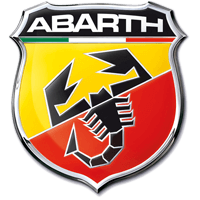Car Safety Technology

When leasing a car, it is important to know that the vehicle you are getting has all the safety features that you need to keep yourself and your family protected in the unwanted case of an accident.
How safe is your car? What you will find in the safest cars in the UK
When you lease a car, you are aware that you’re getting the latest technology – new cars have an impressive car safety features list – let’s take a look at what you will expect to find in the safest cars of 2018.
The Safest Cars to Lease in the UK
Passive safety features
So-called because they are ‘passive’ and require no interaction from the driver, these standard components to your car have generally become so mundane that their inclusion on this list seems unnecessary, yet they form the backbone of your safety skeleton and warrant a mention.
Seatbelts
Saving lives since their introduction, seatbelts are so settled as part of a standard driving experience that most of us don’t think about them anymore, but they form a key component of any set of safety features.
Most modern cars will also come with a smart seatbelt reminder to let you know if you’ve forgotten to belt up!
Advances in technologies over the years mean that today’s cars almost all feature pre-tensioned and load-limited seatbelts for comfort and safety.
Airbags
Another long-standing safety feature, dual-stage airbags come as standard in any modern car and provide an extra level of cushioning in a collision.
Airbag systems can (and should) be turned off in sections where a rear-facing baby car seat is in place as they are designed for a full-sized and front facing passenger and can cause more harm than good to a baby.
Depending on the car specifications, side-mounted side airbags, side curtain airbags and knee airbags may all be included alongside the standard set to help keep all passengers safe.
Head restraints
Good head restraints are the best safety feature for preventing whiplash in a collision. Make sure that you adjust your head restraints properly for your height to allow them to do their job optimally.
Head restraints can also be removed and used to break open a window in the case of an emergency (such as the car falling into deep water and becoming submerged) – a feature they are actually designed to do!
The body of the car
How often do you consider the body of your vehicle when thinking about its safety? But, of course, a strong body shell is the centre of all safety features of a car. With decades of design poured into every modern car, the vehicle you drive today features special crumple zones to protect passengers, strengthened struts, and sections that are designed to break away rather than injure those within.
When dealing with an impact, a well-designed car body absorbs and redistributes the forces involved, forming a shield for the occupants.
One modern addition to car bodies is the idea of pedestrian protection – adjustments to the body design to help protect any pedestrian in the case of an impact, from collapsing bumpers to pop-up bonnets, or even just a subtle redesign over years to move the more solid components of the front grille away from a typical head height.
Active safety features
Moving towards the more obviously technological advances, the safety technology in cars has become one of the strongest selling points and should certainly be something you give consideration to when leasing your next vehicle.
Electronic Stability Control (ESC)
Also known by a variety of other names and acronyms (ESP, DSC and more), ESC is a computerised system for adjusting the individual braking on each wheel to maintain stability in the face of poor road conditions and emergency situations.
When ESC engages, your car works with you to keep on the mark - gaining traction and making subtle rapid adjustments to keep the car going where you want it to.
ESC is not a replacement for good driving, of course – it is considered an enhancement on anti-locking brake technology and should never be ‘put to the test’ through poor driving.
Adaptive cruise control
There is a story often told of a man who was driving his impressive American RV along the highway in the early days of cruise control. Wanting to make himself a drink, he flicked on the new feature and went into the rear of the vehicle to put the kettle on. When the van crashed sometime later, he blamed the manufacturers for not making it clear that cruise control didn’t mean ‘self-driving’.
Not only do we have self-driving cars filtering into the marketplace now, but we all know that all cruise control does is maintain a constant speed when driving.
Adaptive cruise control, a major technological upgrade to the original, is a step closer to the belief of that early RV driver, utilising radar and other sensing technology to adjust the speed based on the car in front – if they slow, so do you, preventing an upsetting collision.
It’s a great safety addition to the basic cruise control – though it still doesn’t steer the car for you, nor pull over for police when they see you careering across the lanes.
Electronic Brake-Force Distribution (EBD)
Another improvement on the anti-lock brakes of old, EBD is a system that allows the braking of each wheel to be controlled independently to the others, and to distribute the force of braking across all four wheels in a way to offer a smooth slow and stop.
EBD gives an extra measure of control when suddenly stopping, helping the car maintain its direction rather than skidding or slipping to the side. With the computer determining whether to hold or release each wheel in milliseconds, simply applying the brakes invokes a safety feature that cuts braking distance considerably and adds a degree of stability that may save lives.
Autonomous Emergency Braking (AEB)
Ever wished your car would just stop for you in an emergency? With a new safety feature that has come from the world of automated cars, AEB does exactly that, utilising an array of sensors to apply the breaks autonomously should the computer believe a collision is imminent.
AEB warns the driver of its intention through an audible warning before taking matters onto itself and simply stopping the car if the driver doesn’t react properly to the situation. AEB is one of the new safety features in cars that has a direct impact on safety both inside and outside the vehicle.
Speed limiting devices
Almost the polar opposite to cruise control (though no-doubt derived from the same technology), speed limiting allows you to set a speed above which the car will not go (it’s worth noting that a forceful push on the accelerator disables speed limiting, allowing the driver to still maintain full control of the car in the case of an emergency).
Speed limiting is a great way to stay under the speed limit as you drive though towns and helps protect pedestrians from collisions with speeding vehicles.
Attention monitoring systems
By tracking your driving, the way you hold the steering wheel, even the sound of your breathing in some advanced systems, attention monitoring systems are available to help wake you up if the night is dragging on. Of course, they are no replacement for good rest, and the alert is really designed to indicate that you should probably pull into a services for a break.
Another new safety feature in cars which could very well save your life.
Lane-keeping technology
Next, the advanced safety feature of lane-keeping technology; utilising radar, cameras and similar sensors, lane-keeping systems alert the driver if he is moving out of a lane on a motorway – even, in some cases, nudging the car back into place.
It’s clever of course, and knows the difference between a purposeful lane change and one that is more accidental.
Blind spot warning systems
Tied into the same sensory technology that is used for lane-keeping, blind-sport warning systems can detect when a vehicle (including motorcycle or pedal cyclist) is just out of view to the side of the car and displays a warning on the side mirror to prevent the potentially devastating accident.
These sensor-based safety features are only the beginning – surely future car safety features based around your vehicle’s ability to ‘see’ what goes on around you are going to continue to improve?
Visibility aids
The addition of cameras is not only for the computer’s use. Many modern cars now come with visibility aids – cameras that can see the blind parts of the car to help with parking, reversing and other manoeuvres.
Being able to see more clearly, even if it is through the slightly disconnected view of a rear-positioned camera, helps hugely in ensuring you don’t crash into something small and obscured, such as a bollard, rock or, at worst, a child.
Active headlights
One of the subtler active safety features is that of active headlights, which automatically adjust to show you the parts of the road you are actively looking at. Perfect for going around corners in the dark!
Tyre Pressure Monitoring Systems (TPMS)
Making sure your tyre pressure is at the right level is an important part of daily care of your vehicle and adds considerably to the safety of your drive.
Small additions, like TPMS therefore, can go a long way in improving safety. Whether its to warn of an impending blow out, or just a reminder to perform a quick stop and pump up the tyres, tyre pressure monitoring systems are a nice addition to the car safety features list.
What are the cars with the best safety features that are available to lease today?
At Complete Leasing, we are always looking to find out what models have the best car features. We know just how important car safety is to our customers and have specialists regularly ask themselves what the most important safety feature on a car is – looking through the possible options to pick the perfect vehicle.
The answer, of course, is all of them. Car safety is a matter of multiple systems put in place together, making an overall experience that protects those within, as well as those on the outside. We make sure all the cars we offer have the highest specifications and test scores for safety – call us today to discuss your requirements and we can help you find the perfect vehicle for you and the cheapest car lease deal.
To contact us, simply pick up the phone or if now isn’t a convenient time, fill in our contact form and have one of our leasing specialists call you back at a time that better suits you.




































